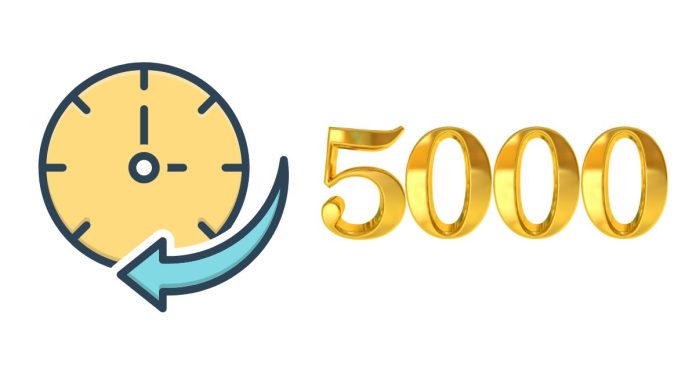What Year Was 5,000 Years Ago?
When we think about the passage of time, 5,000 years feels like an unfathomable stretch. But what year would it have been 5,000 years ago? Let’s explore this fascinating question and provide clarity on how we calculate such a timeline.
The Calculation
The current year is 2025. To determine what year it was 5,000 years ago, we simply subtract 5,000 from the current year:
2025 – 5000 = 2975 B.C.
This means that 5,000 years ago, it was approximately 2975 B.C. The “B.C.” designation stands for “Before Christ” and counts years backward from the traditionally estimated year of Jesus Christ’s birth. For context, in this system, the year before 1 A.D. is 1 B.C., with no year zero in between.
Understanding the Timeline
The year 2975 B.C. is deeply rooted in ancient history. This was the early Bronze Age in many parts of the world, a time when civilizations were emerging and cultures were beginning to take shape. Societies in Mesopotamia, the Indus Valley, and Egypt were advancing in agriculture, trade, and the arts.
It’s important to note that historical dating systems like “B.C.” and “A.D.” have been supplemented in modern usage by “BCE” (Before Common Era) and “CE” (Common Era) to provide a non-religious alternative, but the numerical calculations remain the same.
Common Misunderstandings
Many confuse the phrase “5,000 years ago” with dates like 5000 B.C. or 2000 B.C. However, these are fixed points in history and do not account for the subtraction from our current year. It’s a simple math exercise, but it’s easy to see how misconceptions arise.
Why It Matters
Reflecting on what year it was 5,000 years ago gives us a sense of perspective about how far human civilization has come. It highlights the long arc of history and encourages us to think about the advancements and challenges that have shaped our world.
So, the next time someone asks, “What year was 5,000 years ago?” you can confidently answer: 2975 B.C.!


